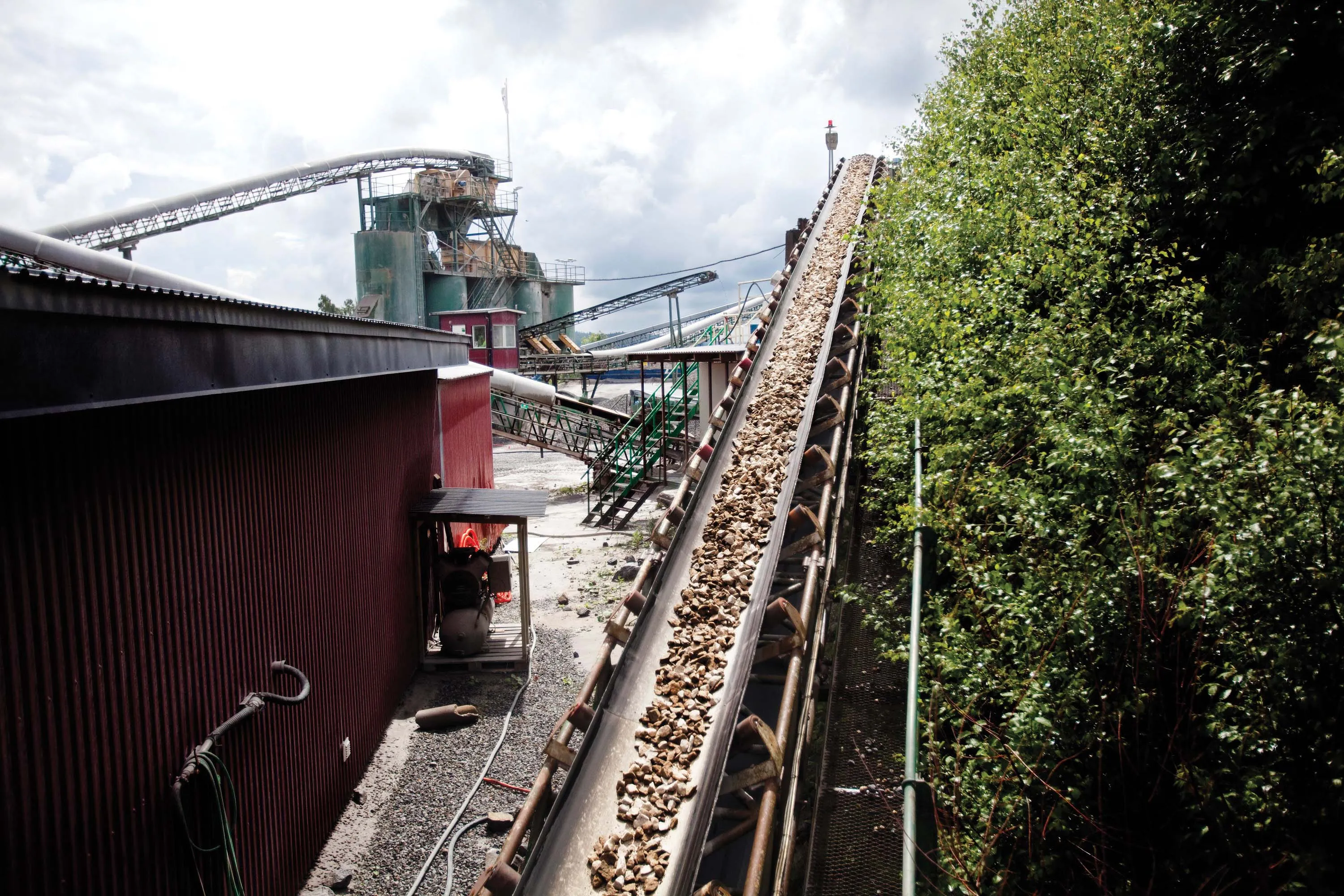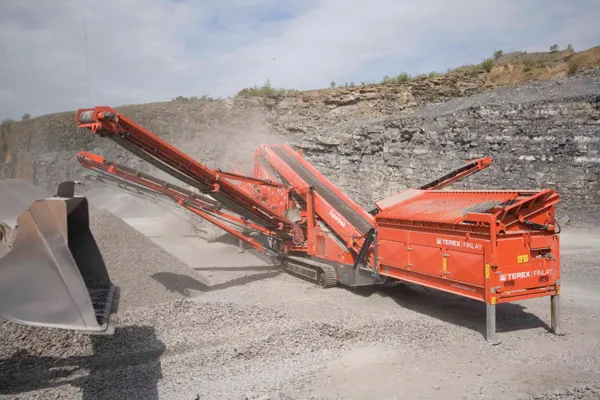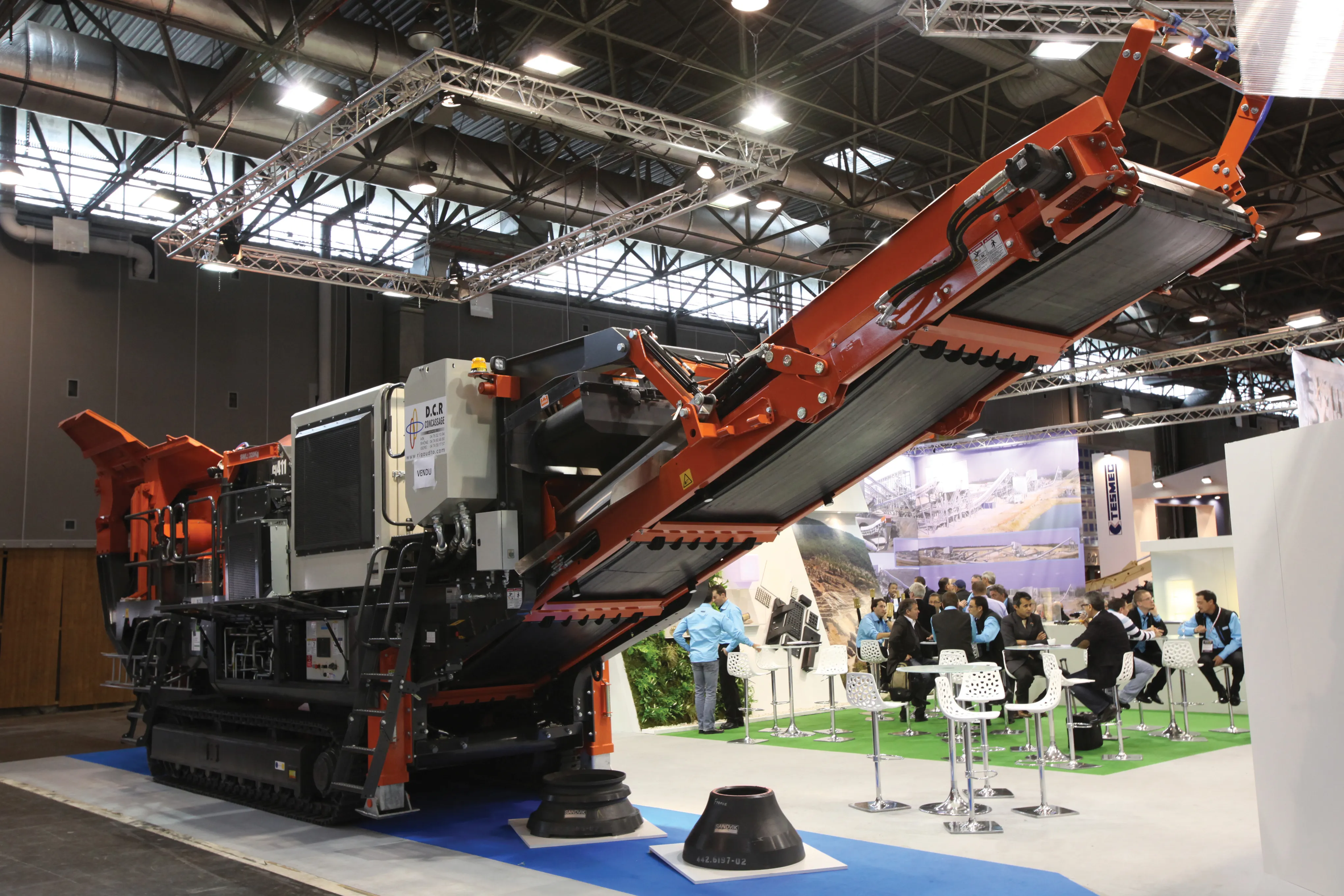
The Canadian aggregates equipment manufacturer says that the blended screen media approach offers improved efficiency by extending screen media life and minimising issues such as blinding and pegging. The company’s technicians work with producers, evaluating their applications, challenges and goals to customise screen media selection.
Before making recommendations,
Each phase of screening is matched with the ideal screen media to address the challenges of that phase from layered to basic to sharp. The recommended media styles which could range from polyurethane to rubber to metal or woven wire reduces wear and maximises productivity.
In many applications, operators look for greater wear life on the screen’s feed end — at the layered phase. Haver & Boecker says that this can be accomplished by installing a section of heavy-duty screen media, such as Haver & Boecker’s Ty-Max, Ty-Dura or Ty-Plate. These offer a reinforced design by incorporating polyurethane, rubber or metal plate to withstand high top sizes and abrasion.
In the middle of the deck, Ty-Wire tends to be a popular choice since it gives operators the ideal combination of wear life and open area where most screening — or basic screening — takes place.
Using woven wire or self-cleaning screen media at the discharge end — where sharp screening occurs — provides maximum open area at the end of the deck to allow any remaining undersized particles to fall through and for near-sized material to pass. This prevents contamination of the final product.
Ty-Wire combines woven wire with an engineered composite to achieve open area closer to wire cloth, but with four to seven times longer wear life. Ty-Wire weighs less than woven wire, making it safer to handle and easier to install. It’s an excellent hybrid product.
Haver & Boecker’s polyurethane screen media is manufactured out of Tyrethane, the manufacturer’s signature blend of polyurethane. Chemists developed Tyrethane to offer the best combination of open area and wear life for both wet and dry applications. Tyrethane is poured open cast, resulting in 1.5 to 2 times longer wear life than injection-moulded products.
In addition, open cast polyurethane permanently hardens when cured to maintain its chemical properties, so it resists wear and tear. Injection-moulded screens can soften when the temperature rises during screening, resulting in shorter wear life.








